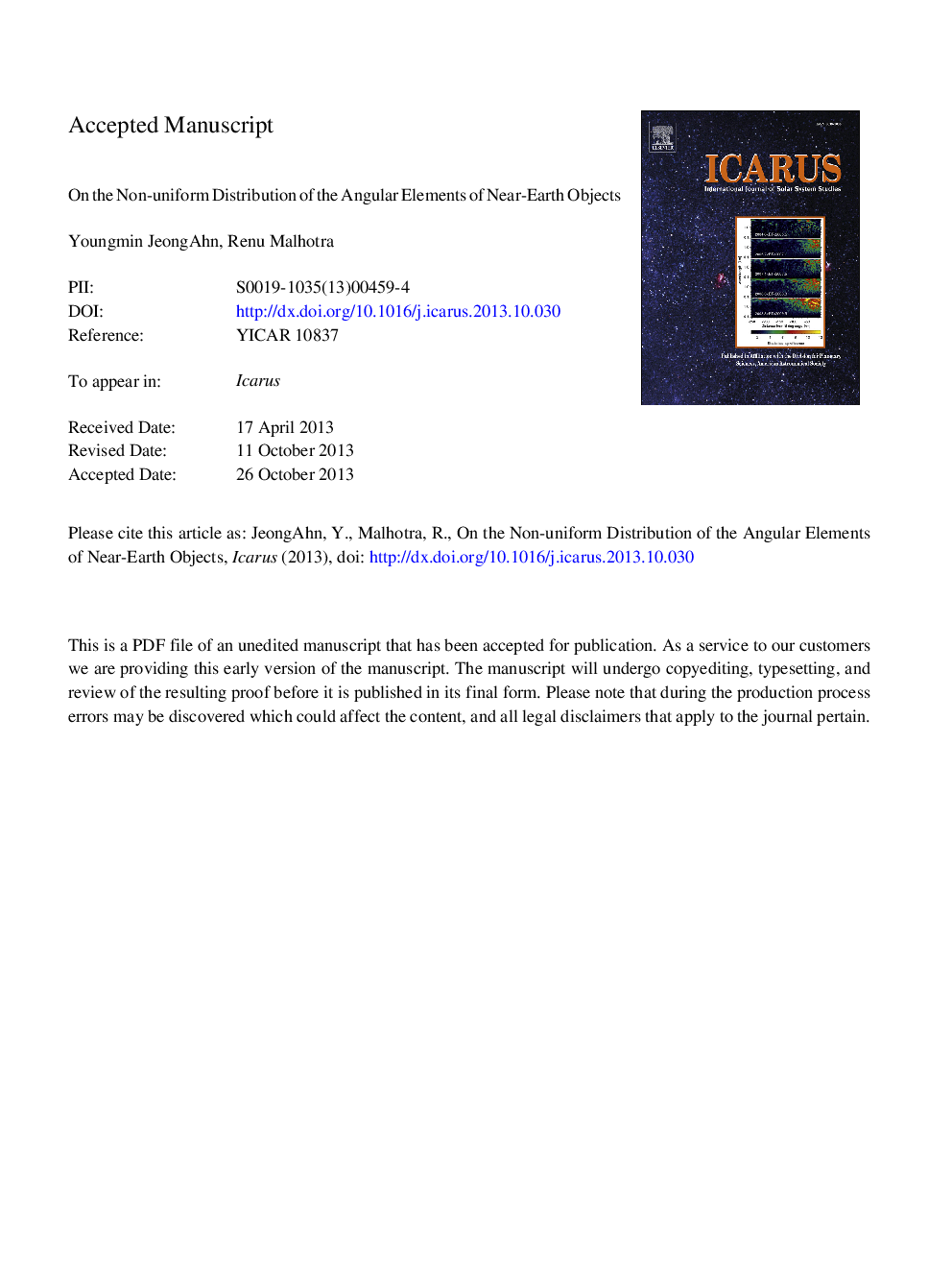| Article ID | Journal | Published Year | Pages | File Type |
|---|---|---|---|---|
| 8138897 | Icarus | 2014 | 38 Pages |
Abstract
We examine the angular distributions of near-Earth objects (NEOs) which are often regarded as uniform. The apparent distribution of the longitude of ascending node, Ω, is strongly affected by well-known seasonal effects in the discovery rate of NEOs. The deviation from the expected Ï-periodicity in the apparent distribution of Ω indicates that its intrinsic distribution is slightly enhanced along a mean direction, Ωâ¾=111°; approximately 53% of NEOs have Ω values within ±90° of Ωâ¾. We also find that each subgroup of NEOs (Amors, Apollos and Atens) has different observational selection effects which cause different non-uniformities in the apparent distributions of their arguments of perihelion Ï, and longitudes of perihelion Ï. For their intrinsic distributions, our analysis reveals that the Apollo asteroids have non-uniform Ï due to secular dynamics associated with inclination-eccentricity-Ï coupling, and the Amors' Ï distribution is peaked towards the secularly forced eccentricity vector. The Apollos' Ï distribution is axial, favoring values near 0° and 180°; the two quadrants centered at 0° and 180° account for 55% of the Apollos' Ï values. The Amors' Ï distribution peaks near Ïâ¾=4°; 61% of Amors have Ï within ±90° of this peak. We show that these modest but statistically significant deviations from uniform random distributions of angular elements are owed to planetary perturbations, primarily Jupiter's. It is remarkable that this strongly chaotic population of minor planets reveals the presence of Jupiter in its angular distributions.
Related Topics
Physical Sciences and Engineering
Earth and Planetary Sciences
Space and Planetary Science
Authors
Youngmin JeongAhn, Renu Malhotra,
